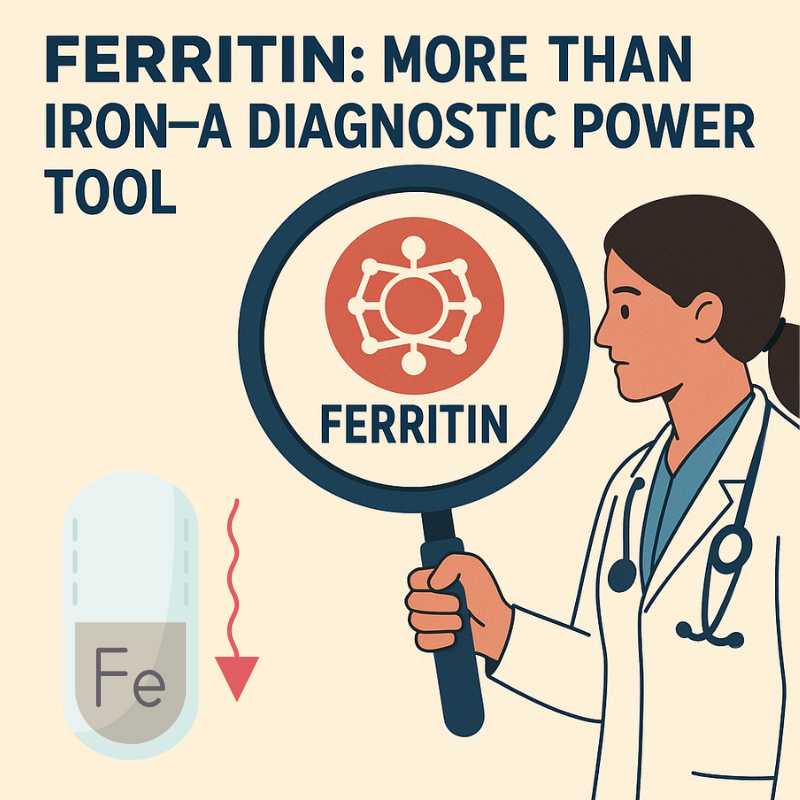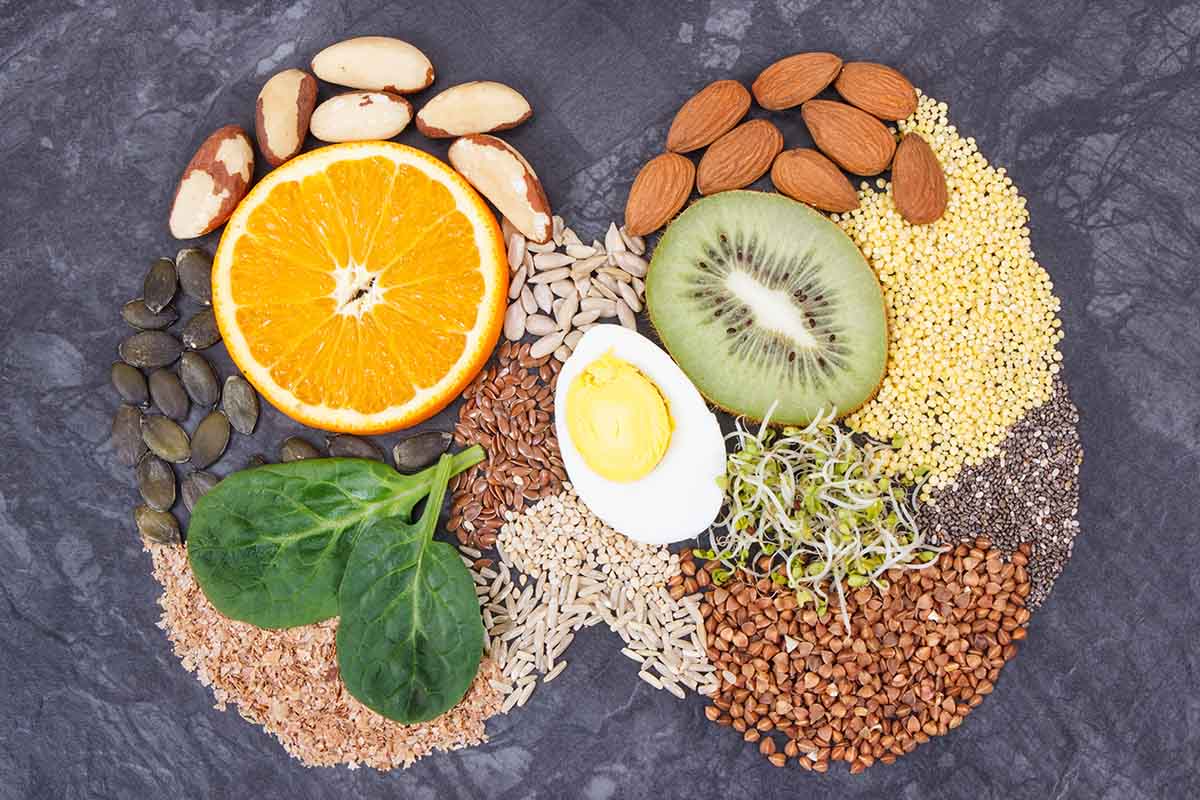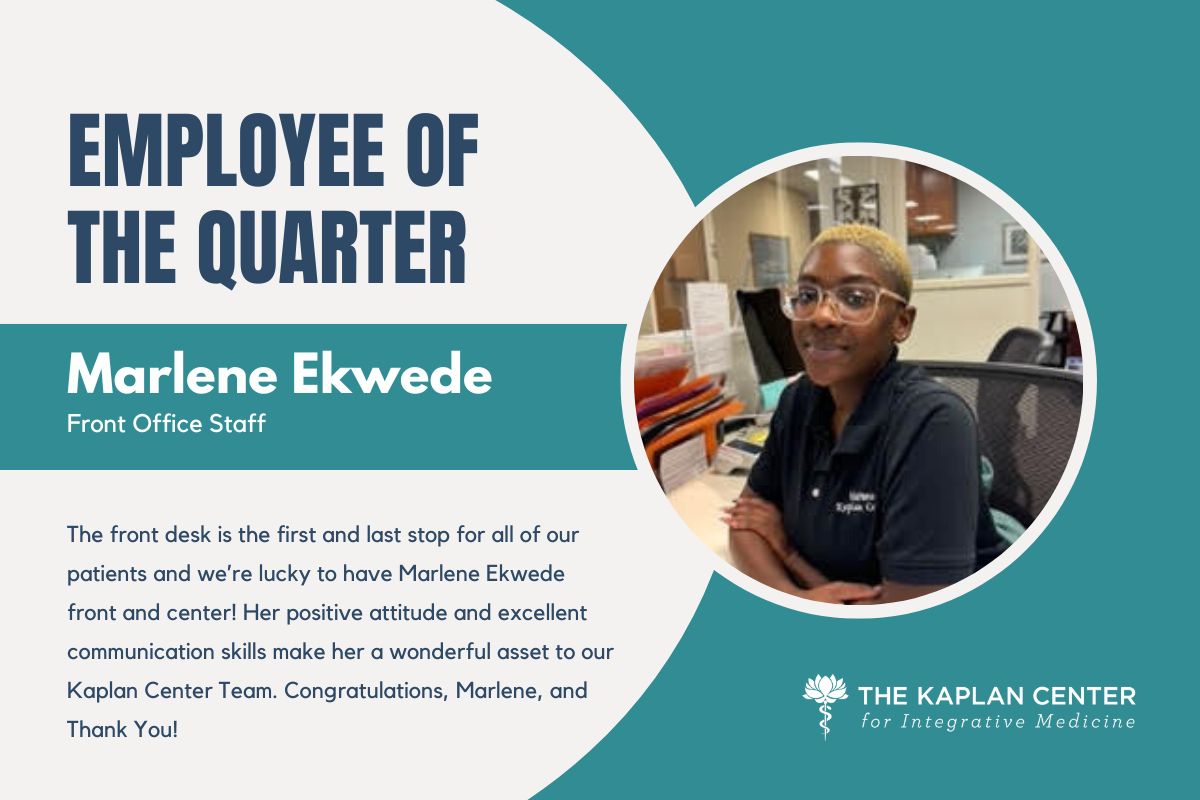
“I Kept Bracing Myself for a Crash”: A Long COVID Recovery Story
July 17, 2025/by Nidhi Reva
Why I Keep Going Back
July 9, 2025/by Nidhi Reva
Acupuncture for Headaches: A Holistic Approach to Lasting Relief
June 30, 2025/by Rebecca Berkson, L.Ac, Dipl.OM
Ferritin: More Than Iron—A Diagnostic Power Tool
June 24, 2025/by Nidhi Reva
“Not All in Her Head”: Callie’s Story of Seizures, Strength, and Starting Over
June 19, 2025/by Nidhi Reva
An Important Reminder From Nurse Nan: Save Your Tick
June 17, 2025/by Nan Kinder, RN
“I Think I’m Losing My Mind”: When Treating Tick-Borne Illness Feels Worse Before It Gets Better
June 12, 2025/by Nidhi Reva
A Patient’s Story: From Pushing Herself to Be Stronger—To Acceptance
June 12, 2025/by Nidhi Reva
Long COVID Webinar and Q&A
June 3, 2025/by Kaplan Center
Good Morning Washington Visits the Kaplan Center! Part 2
June 2, 2025/by Kaplan Center
Good Morning Washington Visits The Kaplan Center! Part 1
May 13, 2025/by Kaplan Center
Which Respiratory Infection Do You Have?
December 10, 2024/by Kaplan Center
Eating “Right” But Feeling Wrong? The Problem with One-Size-Fits-All Diets and Blood Sugar
December 4, 2024/by Kaplan Center
Nutrition Tips for Thyroid Health
November 21, 2024/by Kaplan Center
4 Ways to Practice Gratitude During the Holidays
November 21, 2024/by Gary Kaplan, DO
Out of the Fog: Strategies to Prevent Brain Fog and Sharpen Cognitive Function
November 19, 2024/by Kaplan Center
Employee of the Quarter: Marlene Ekwede
October 28, 2024/by Kaplan Center
Stop Eating These Foods And Clear Up Your Brain!
October 28, 2024/by Gary Kaplan, DO
8 Tips To Help You Manage Your Medications
October 21, 2024/by Gary Kaplan, DO
Preventing & Treating Osteoporosis with Yoga, Resistance Training, Diet, & Medications
October 14, 2024/by Lisa Lilienfield, MDAre you looking to improve your overall wellness?
Personalized care you can trust.
Our integrative, non-surgical treatment approach is highly successful in maintaining wellness and also treating chronic pain and illness. For more than 30 years, we have delivered superior, cutting-edge health care in the Washington, DC area.
QuickLinks
Contact Information
Tel: 703-532-4892
Fax: 703-237-3105
6829 Elm Street, Suite 300
McLean, Virginia 22101
Map It
Hours of Operation
Mon – Thu : 8 am – 5 pm, ET
Fri : 8 am – 12 pm, ET
Living in the Shadow of COVID-19: The Persistent Struggle with Long-COVID
/in COVID-19, Long Covid/by Kaplan CenterIf you or someone you know has overcome COVID-19, there may be an expectation that life will quickly return to normal. Yet, for millions globally, that recovery is marred by the onset of Long-COVID, a perplexing condition that shadows them long after the virus has subsided. This condition isn’t just a continuation of the initial illness; it’s a new, often more complex battle characterized by various symptoms that weave unpredictably through every aspect of daily life.
Long-COVID, also known as Post-Acute Sequelae of SARS-CoV-2 infection (PASC), emerges as a series of physical and psychological challenges that can persist for months or even years. Imagine waking up every day not knowing which version of yourself you’ll confront—will it be a day marred by crippling fatigue, or will brain fog cloud your thoughts and hamper your simplest tasks? Perhaps breathlessness will tighten its grip during a short walk from your bed to the kitchen, or maybe today is when your heart races with unsettling palpitations that no amount of calming can ease.
These symptoms of Long-COVID, not only disrupt personal health and well-being but also affect relationships, professional ambitions, and the very essence of what it means to feel normal. In this article, we delve into the lives of those grappling with Long-COVID, exploring their daily challenges and the broader implications of a condition as varied as unpredictable. Through their stories, we seek to foster understanding and empathy, offering a glimpse into the enduring impact of a global pandemic that continues to redefine health landscapes and personal narratives alike.
Understanding Long-COVID
Long-COVID, or Post-Acute Sequelae of SARS-CoV-2 infection (PASC), is a complex, multifaceted condition that continues to baffle the medical community. It occurs after the acute phase of a COVID-19 infection and can persist for months or even years, with symptoms that can severely impact a person’s quality of life. Unlike the initial infection, which is usually confined to respiratory symptoms, Long-COVID has a broad spectrum of signs and symptoms affecting multiple organ systems.
The Scope of Symptoms
The symptoms of Long-COVID are diverse and often debilitating. They include, but are not limited to:
What We Know So Far
Research into Long-COVID is robust and diverse, addressing the varied manifestations of the condition across different patient populations. One leading theory suggests that the virus may cause a prolonged immune response, leading to widespread inflammation that affects multiple organ systems. Supporting this, Dr. Bruce Patterson’s research provides significant insights into the immunological aspects of Long-COVID. His studies have identified specific biomarkers that correlate with various Long-COVID symptoms, suggesting that certain immune cells may continue to drive inflammation well after the initial infection has resolved.
Another area of Dr. Patterson’s research focuses on the possibility that the virus may remain in some small reservoirs within the body, reactivating periodically and causing symptoms. This theory could explain the relapsing-remitting nature of Long-COVID, where symptoms flare up and subside, challenging the recovery process.
Epidemiologically, Long-COVID appears to affect around 10% to 30% of those who contract COVID-19, including those who had mild cases or were asymptomatic during the initial infection phase. The condition does not discriminate, affecting individuals young and old, healthy and those with pre-existing conditions. Dr. Patterson’s ongoing work aims to delineate further the risk factors and mechanisms underlying these disparities, providing a clearer picture of who is most at risk and why.
Dr. Patterson’s innovative approach involves using advanced diagnostic tools to better understand the “Long hauler” phenotype. His team uses sophisticated lab techniques to measure the levels of cytokines and other immune markers in patients diagnosed with Long-COVID. This research not only helps in understanding the pathophysiology of Long-COVID but also assists in developing targeted therapies that address the specific biological mechanisms at play.
This ongoing research is crucial as it continues to fill the gaps in our understanding of Long-COVID, paving the way for new treatments and interventions that are grounded in solid scientific evidence. The hope is that these efforts will lead to significant breakthroughs in the management and treatment of Long-COVID, offering relief and recovery to millions affected worldwide.
Diagnostic Challenges
Currently, no single test can diagnose Long-COVID, which complicates healthcare providers’ ability to understand and treat this condition. Diagnosis is primarily based on patient history and a process of exclusion, where other potential causes for the symptoms are ruled out.
As the scientific community’s understanding of Long-COVID evolves, it becomes clear that this is not merely a singular health issue but a spectrum of conditions with potentially profound implications for public health systems globally.
The Challenges of Working with Long-COVID
For many, the workplace becomes a battleground where daily victories hinge on health fluctuations and the understanding of colleagues and employers. Accommodations such as modified work hours, telecommuting options, and physical support can be crucial for maintaining employment and dignity.
Beyond the workplace, Long-COVID affects social interactions and personal relationships. Activities that were once routine can become exhausting or impossible, leading to social isolation and emotional strain. Support groups and online communities have become vital, providing spaces for sharing experiences and coping strategies.
Understanding Long-COVID is just the beginning. It’s crucial for everyone—employers, family members, healthcare providers—to learn how to support those affected. By raising awareness and advocating for better care and accommodations, we can improve the lives of those dealing with Long-COVID.
Medical and Supportive Care
Addressing Long-COVID requires a multifaceted approach due to its complex and varied symptoms. The Kaplan Center for Integrative Medicine has been at the forefront of treating Long-COVID by employing a personalized and integrative strategy that reflects the center’s deep understanding of chronic illness management. This approach is designed not only to alleviate the wide range of Long-COVID symptoms but also to enhance the overall well-being of each patient.
Comprehensive Treatment Modalities
At the Kaplan Center, treatment plans for Long-COVID are tailored to each patient’s individual needs. Recognizing that Long-COVID can affect virtually any system in the body, the center utilizes a variety of therapeutic modalities:
Expertise in Chronic Illness Management
The Kaplan Center’s approach is deeply rooted in its decades-long expertise in managing chronic illnesses. The center’s team includes specialists across various fields who collaborate to address the unique aspects of Long-COVID. Cutting-edge diagnostic tests developed under the guidance of experts like Dr. Bruce Patterson help pinpoint specific biomarkers. This precision medicine approach ensures that treatments are not only targeted but also more effective in managing the condition.
Patient-Centered Care
Central to the Kaplan Center’s philosophy is a patient-centered approach, where treatments are adjusted based on continuous feedback and monitoring of the patient’s progress. This dynamic approach helps in accommodating the changing nature of Long-COVID symptoms, ensuring that each patient receives care that is adapted to their evolving needs.
By integrating these various modalities and expertise, the Kaplan Center strives to provide a comprehensive treatment framework that addresses the physical, mental, and emotional challenges posed by Long-COVID. The goal is not just symptom management but enabling patients to achieve and maintain their best possible health after experiencing COVID-19.
Are you or someone you know affected by Long-COVID? Sharing your story can inspire change and help others feel less alone. Join us in spreading awareness and pushing for better support by sharing this article and your experiences on social media.
Long-COVID Recovery Services
If you are experiencing symptoms beyond six weeks of being diagnosed with COVID-19, learn more about our Long-COVID Recovery Services to regain your strength, energy, and vitality. Click here for more information.
Special Report: Understanding Long-COVID Syndrome
In this Special Report, we cover:
CLICK HERE TO GET YOUR COPY
Is a Plant-Based Diet the Key to Solving My Digestive Disorders?
/in Digestive Issues, Nutrition/by Kaplan CenterPlant-based diets are on the rise primarily due to the increasing recognition of their health benefits and better nutritional intake. As research continues to highlight the positive impacts of a plant-based diet on health and well-being, you may be among the many who are considering switching to this dietary approach.
When we talk about plant-based, you might only think “vegan” or “vegetarian,” but today there are many more types to consider, depending on your health profile. As a general rule, if you’re eating plant-based that means you are not eating meat or dairy products, eggs, poultry, or seafood. But as you’ll see from the list below, there are many ways to approach it, including keeping small amounts of meat and dairy in your diet but making an effort to add more plant-based food sources.
Plant-based diets include:
The growing availability of plant-based options in stores and restaurants makes it much easier for you to adopt; but can a plant-based diet solve your digestive disorders?
Digestive Disorders and The Impact of Plant-based Diets
Digestive disorders such as Crohn’s disease, ulcerative colitis, or irritable bowel syndrome can significantly impact your quality of life. The ongoing nature of these conditions means that symptoms of discomfort and pain can disrupt your day-to-day activities and routine tasks. If you’re struggling with digestive issues, you may be wondering if changing your diet could help, especially since a plant-based diet comes with many benefits. The following factors highlight why a plant-based diet might be an idea worth trying.
Plant-based diets tend to have a high fiber content. Fiber is essential for maintaining regular bowel movements and preventing constipation, a common digestive symptom. Incorporating more plant-based foods into your diet will result in increased fiber consumption and, by association, may improve digestion with more regular bowel habits. It is important to note there are 2 different types of fibers. Soluble and insoluble fibers are primarily found in fruits, vegetables, and whole grains. Soluble fiber attracts water, binds to fatty deposits (cholesterol), and eliminates them from the body. Insoluble fiber adds bulk to stool and helps to move food through the gut.
Studies show that chronic inflammation in the digestive tract can contribute to various digestive disorders. Adopting a plant-based diet limits or restricts pro-inflammatory foods (processed sugars and foods high in trans and saturated fats) giving the gut a chance to heal. By eating more foods high in healthy omega-3 fatty acids (which we don’t always get enough of), you’ll also be keeping the omega-3 / omega-6 ratio in balance. Plant-based foods are also naturally anti-inflammatory thanks to their abundance of antioxidants, phytonutrients, and fiber. The anti-inflammatory properties in fruits and vegetables may not only reduce the risk of developing a digestive disorder but may protect against other chronic inflammatory diseases as well.
The gut microbiome plays a crucial role in our digestive health. It does everything from nutrient absorption to boosting immune function. Research suggests that adopting plant-based diets increases the number of beneficial bacteria in our gut. How? Many plant-based foods are prebiotics and prebiotics are known to feed beneficial gut bacteria and help to promote the accumulation of healthy probiotics in the gut.
Some people have a problem breaking down the fats and proteins in animal byproducts. This can lead to increased inflammation and gut disturbances that can lead to chronic inflammation and chronic constipation in some cases. High intake of animal byproducts can lead to IBD and constant exposure can lead to colon cancer.
Incorporating More Plant-Based Foods Into Your Dietary Habits
Now that we’ve mentioned some benefits of a plant-based diet, here are a few tips on how to start.
Transitioning to a plant-based diet may improve your digestive disorders and reduce the severity of symptoms that you experience. To discuss the benefits of starting a plant-based diet, the best way to go about it, and other nutritional advice that might help improve the presence of digestive symptoms, please call us at 703-532-4892 and make an appointment.
We are here for you, and we want to help.
Our goal is to return you to optimal health as soon as possible. To schedule an appointment please call: 703-532-4892 x2
References
We are here for you, and we want to help.
Our goal is to return you to optimal health as soon as possible. To schedule an appointment please call: 703-532-4892 x2
How Can I Stay Active with Fibromyalgia Without Overdoing It?
/in Conditions, Wellness/by Kaplan CenterLiving with fibromyalgia can present unique challenges, especially when it comes to staying active. It is not uncommon for people with fibromyalgia to feel nervous about exercising because they are scared about making the pain worse. However, in reality, exercise can help those living with fibromyalgia.
Research shows that individuals with fibromyalgia who exercise routinely can enjoy the following benefits:
If you have fibromyalgia, you can safely participate in regular, appropriate exercise without worsening your symptoms. The trick is finding the right balance between staying active and not overdoing it.
Here are a few tips on how to stay active with fibromyalgia safely and effectively.
1 – Choose Suitable Exercises
Not all exercises are created equal, especially when it comes to fibromyalgia. Consider low-impact activities that are gentle on the joints and muscles. This includes activities such as walking, swimming or water aerobics, or yoga. These exercises can improve cardiovascular health, flexibility and strength without putting excessive strain on your body. They also reflect exercises that can be started for those at any fitness level.
2 – Build Up Your Exercise Tolerance
With any exercise, the goal is to start slowly and gradually increase the intensity and duration of your workouts. For example, begin with short sessions of 10-15 minutes a few times a week. Gradually extend the duration of exercise as your tolerance improves. Listen to your body throughout this process and don’t push yourself too hard, especially when symptoms are flaring up.
3 – Exercise with Breaks
Break up your exercise routine into shorter segments with rest periods in between. For example, instead of trying to complete a 30-minute walk at one time, divide it into three 10-minute walks spread throughout the day. This approach can help prevent overexertion, help you incorporate exercise into your daily routine, and minimize post-exercise fatigue.
4 – Consult with a Physical Therapist
There is great utility in speaking to a physical therapist before starting any new exercise routine. A physical therapist can teach you proper techniques to prevent injury and optimize the benefits of exercise, and they can give you a program to do at home to regain your strength and flexibility. Our physical therapists specialize in working with fibromyalgia patients and can provide personalized exercise recommendations based on your needs and limitations.
5 – Prioritize Rest and Recovery
Rest is just as important as exercise, especially for individuals with fibromyalgia. Allow yourself adequate time to rest and recover between workouts to prevent burnout and avoid triggering flare-ups.
6 – Stay Hydrated While Exercising
Proper hydration is essential during all forms of exercise. Drink plenty of water before, during and after exercise to stay hydrated and replace fluids lost through sweating. You should also fuel your body with nutritious foods that provide sustained energy and essential nutrients.
7 – Incorporate Exercise into Your Daily Routine (if possible)
Find creative ways to incorporate physical activity into your daily life, even on busy days. Consider taking the stairs instead of the elevator, park farther away from your destination to take extra steps, or do gentle stretches while watching TV. Integrating exercise into your routine makes it more manageable and sustainable over the long term.
8 – Monitor Progress and Adjust Accordingly
This point is crucial if you’re using exercise to reduce the severity of your symptoms. Keep track of your exercise routine, symptoms and progress over time. This will help you identify patterns and make informed adjustments as needed. Use a journal or fitness app to record your workouts, how you feel before and after exercise and any changes in symptoms. Use this information to help identify which exercises are most beneficial and track improvements as you go along. It can also be used as a motivation and goal-setting tool!
9 – Listen to Your Body
This is the most important point. Pay attention to how different activities affect your symptoms and adjust your exercise routine accordingly. If a particular exercise or movement exacerbates pain or fatigue, modify it or try something else. Remember that it’s okay to take rest days when needed and to prioritize self-care.
Incorporating exercise into your life with fibromyalgia can be empowering and beneficial. If you have fibromyalgia and would like help in incorporating physical activity in your life, please give us a call, we can help you. We’ll create a program that considers your goals and your limitations that will help restore balance to your nervous system and improve your symptoms.
References
Exercise and Fibromyalgia
FREE CONSUMER GUIDE
We think you’ll really like our guide – 18 Things You Should Know Before Selecting a Doctor to Treat Your Fibromyalgia Syndrome.
To receive your copy instantly, click here and fill in the form!